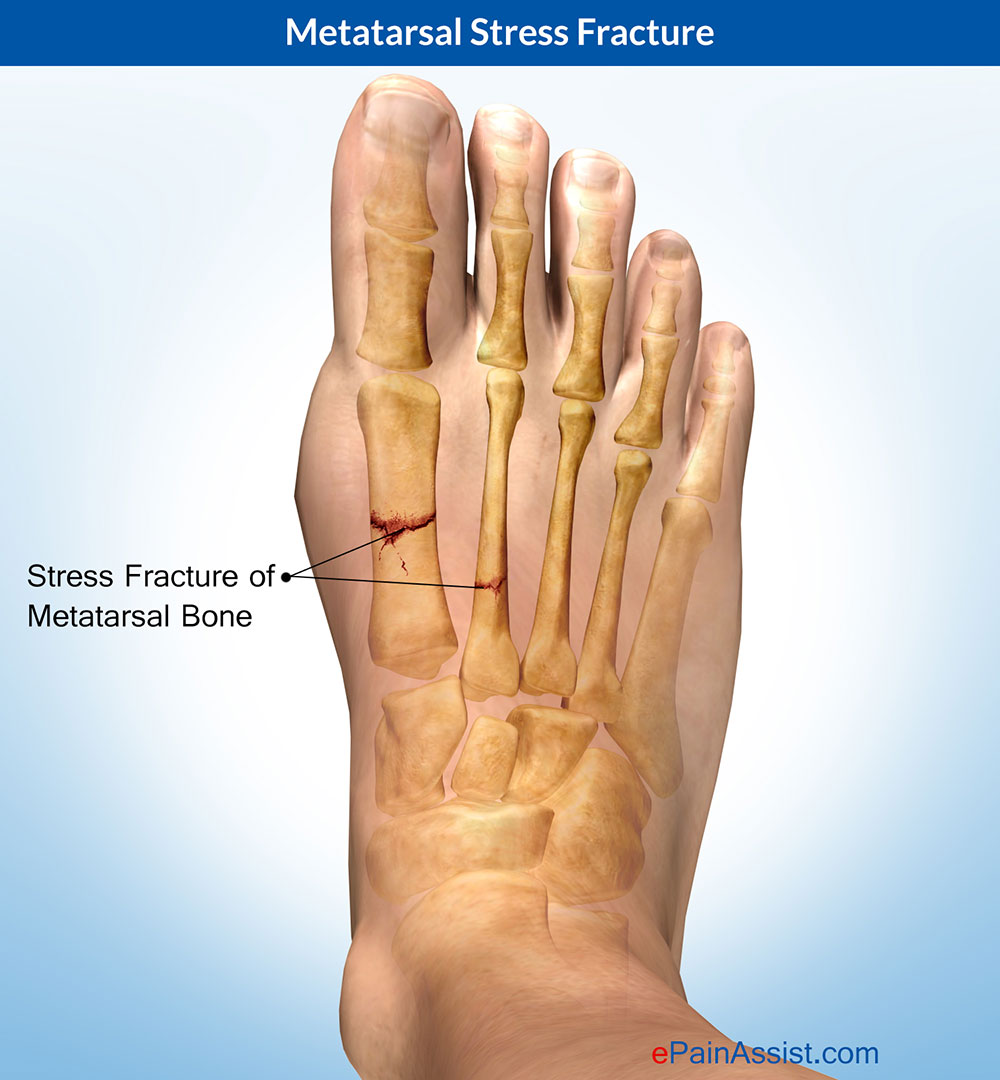The long bones present in the foot, which connect to the toes are known as the metatarsals. Stress fracture of the metatarsals can occur due to chronic overuse or abnormal foot biomechanics.
Fractures of the metatarsals can be acute or stress fracture. Acute fractures occur when there is direct trauma or impact to the bone such as seen in a vicious football tackle. Stress fracture occurs more gradually, over a period of time, due to overuse or repetitive impact/trauma to the bone. Stress fractures usually involve the second, third or fourth metatarsal bones. Metatarsal stress fracture is the most common location for a stress fracture after the tibial stress fractures. The second metatarsal is most commonly fractured in a metatarsal fracture, especially in those individuals who have a longer second toe when compared to their big toe. It also commonly occurs in those individuals who over pronate using the first metatarsal in a dorsiflexed position because this puts a lot of pressure on the 2nd metatarsal. Stress fractures of the other metatarsals do occur although they are not that common.
What Are The Symptoms of Metatarsal Stress Fracture?
- Pain in the metatarsals which increases gradually.
- Pain is in the mid and front region of the foot.
- Pain is increased by weight bearing activities such as walking, running etc.
- Pain upon touching at the point where the bone is broken.
- Swelling is present.
- An x-ray will show fracture after the healing has started.
What Are The Causes of Metatarsal Stress Fracture?
- Overuse.
- Excessive training without taking adequate rest.
- Overpronation.
- Oversupination.
- Longer second toe when compared to the big toe
- Army recruits commonly suffer from metatarsal stress fractures which are also called as “March fracture.” Other individuals who are more prone to this type of fracture are runners, ballet dancers and gymnasts.
What is The Treatment for Metatarsal Stress Fracture?
- Rest should be taken for at least 4 weeks for complete healing.
- Weight bearing activities should be avoided.
- A walking boot may be used to allow partial weight bearing.
- Painkillers can be used for pain relief.
- Once pain upon touch and walking has subsided, activities can be gradually resumed.
- The duration and intensity of the activities/training should be increased gradually.
- If the cause is abnormal foot mechanics such as overpronation or oversupination, then orthotics can be used to correct this problem.
Metatarsal Stress Fracture: Prognosis and Recovery Time
There are five metatarsal bones in one foot. Most often the fracture is observed with first metatarsal bone. Prognosis is satisfactory when fracture is hairline and non-displaced. Displaced, comminuted and compound fracture heals with deformity resulting in long standing pain and difficulties in ambulation. A non-displaced fracture heals in 5 to 6 weeks and functional recovery of the foot near normal takes about 6 to 8 weeks. Displaced fracture may need surgical treatment. Complete healing of fracture following surgery takes about 5 to 6 weeks. Prognosis is good once the fracture is healed. Patient may suffer with mild to moderate pain for few weeks. Recovery time to resume normal activates is 2 to 3 weeks following complete healing of the fracture. In all, patients suffering with metatarsal fracture would need 8 to 10 weeks to heal from the fracture and recover to normal neuromuscular function of the foot.
Also Read:

